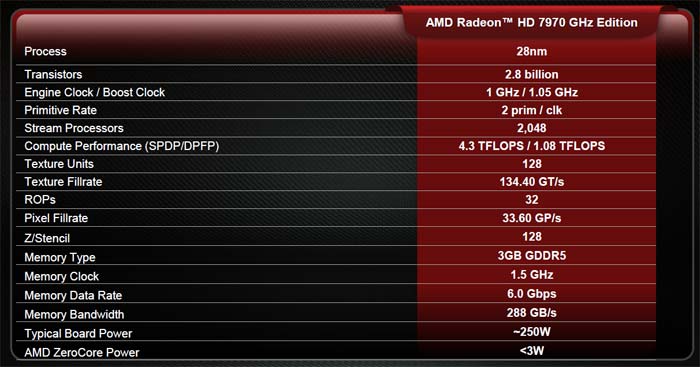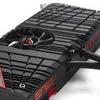Southern Islands and Tech
Specs and Southern Islands
Southern Islands
We always start off with a little introduction towards the entire AMD GPU product stack and their respective code/family names. You've heard and learned about several codenames and that can be a little confusing so we start of with that first. It's simple really, in the market we have entry level, mainstream and high-end products. When you notice "Verde" that's entry level. "Pitcairn" will be the codename the mainstream products will hide under, and finally "Tahiti" is the codename for AMD's most high-end products in the 7000 range of products.
- Entry level = Verde = Radeon HD 7700 series
- Mainstream level = Pitcairn = Radeon HD 7800 series
- High-end level = Tahiti = Radeon HD 7900 series
Technology
For the series 7000 the GPU architecture was overhauled, AMD moved towards a 28nm process technology, these cards are all PCIe gen 3 compatible and there have been significant changes on power consumption. With the launch of the Radeon HD 7000 series AMD also upgraded Eyefinity with version 2.0 DDM audio is now fully supported (you hear audio on the actual monitor it's played of), a 5x1 landscape mode was introduced, and you can now create custom multi-monitor resolutions.
Tahiti XT2
Right as stated the ARES II has two Tahiti XT2 GPUs. AMD bakes these GPU's on a 28nm fabrication node, in very simple wording that means they can put more transistors on a smaller silicon die area. The Tahiti XT2 core has 4.3 Billion transistors (the PDF we received (below) is showing 2.8 billion mistaktly -- which in fact is Pitcairn R7850/7870). Now let me assure you, the Tahiti XT/XT2 GPUS are packed with 2048 shader processors harbored in Compute Units segments (32 of them).

Reference specs of the R7970 XT2, the building block of the ARES 2
Memory volume wise the 1 GHz edition reference cards still pack a massive 3 Gigabyte of DDR5 memory per GPU. This is not done for bragging rights, but AMD simply takes Eyefinity and multiple monitor usage more serious, it is there where the extra memory makes sense. The memory bus of course is still 384-bit as well.
Packing so many transistors on a product is staggering, but if you can't apply a fast enough clock frequency it would become a problem. Well, that's not an issue for AMD either, the reference R7970 GHz edition is clocked at a very fast 1000 MHz with a boost capability of 1050 MHz. The boost feature simply is dynamic clocking, the card has a set power target e.g. in very simple explanation the card does something like this: say the card is allowed to use 225 Watt, so if at 1000 MHz the card uses 175W it will then clock to 1050 MHz as there is room left in the power envelope bracket.
Mind you that ASUS has tweaked and factory overclocked the ARES II a little bit and the base clock is 1050 MHz whereas it may boost towards 1100 MHz if the heat/TDP and power signatures allow it to do so.
Above you can see a photo where the card reveals some of it's mystery. On the 12-layer PCB there are 20 Power phases available on the ARES II. You can see the two GPUs clearly with six gDDR5 chips per GPU on this side of the PCB. For the reference XT2 based graphics cards the 384-bit memory is clocked at impressive speeds at 6.0 Gbps that's bandwidth up-to 288 GB/sec. ASUS changed this as well, the 6 GB of GDDR5 memory is clocked at an impressive 6.6 GHz. To the lower right of the left side GPU you can see another chip, this is a PLX bridge chip providing enough PCIe Express Gen 3 lanes directly in-between the GPUs so that the PCIe slot is not burdened with the Multi-GPU crossfire data overhead.
In the beautiful photo above you can see that each of the GPUs gets a liquid cooling block assigned. The liquid cooling design is made in corporation with Asetek and basically is a sealed-loop water-cooling system that works alongside fan mounted radiator. A 80mm fan will cool down the VRM area and other components. The outer shell or shield if you like to call it is made out of Aluminum, that's not plastic my man. The backplate is made out of Aluminum as well.



